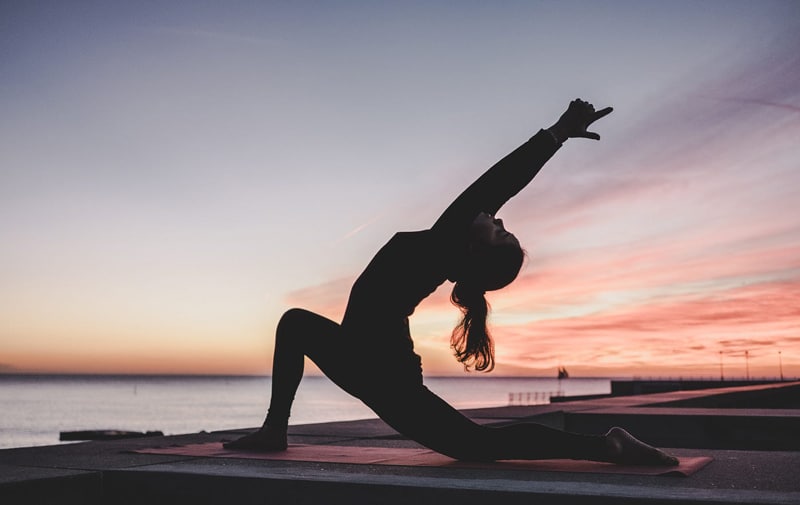Hatha yoga is a traditional form of yoga that focuses on achieving balance and harmony in both the body and mind. It combines physical postures, breathing exercises, and meditation techniques to promote overall well-being. In this article, acteerstudio will explore the principles of Hatha yoga and how you can incorporate it into your practice to enhance your physical and mental health.
Hatha Yoga
Hatha yoga originated in ancient India and is one of the most popular forms of yoga practiced worldwide. The word “Hatha” is derived from two Sanskrit words: “ha” meaning sun and “tha” meaning moon. It symbolizes the balance between opposing forces within us, such as strength and flexibility, effort and surrender, and activity and rest.
The Philosophy behind Hatha Yoga
Hatha yoga follows the belief that a healthy body and mind are essential for spiritual growth. It aims to create a union between the body, breath, and mind, facilitating a state of balance and harmony. By practicing asanas (postures) and pranayama (breathing exercises), practitioners seek to purify and energize the body while calming and focusing the mind.
Benefits of Practicing Hatha Yoga
The practice of Hatha yoga offers numerous benefits for both physical and mental well-being. Regular practice can improve flexibility, strength, and balance while reducing stress and anxiety. It also promotes better breathing, posture, and body awareness. Additionally, Hatha yoga provides an opportunity for self-reflection and inner peace.
Getting Started with Hatha Yoga
Choosing the Right Environment
Select a quiet and clean space for your practice, free from distractions. Ideally, practice in a well-ventilated room with natural light to create a soothing and rejuvenating atmosphere.
Necessary Equipment
To begin your Hatha yoga journey, you will need a comfortable yoga mat, loose-fitting clothing that allows for easy movement, and any props that can support your practice, such as blocks, straps, or bolsters.
Beginning with Basic Poses
Start with foundational poses like Mountain Pose (Tadasana), Child’s Pose (Balasana), and Corpse Pose (Savasana). These poses will help you establish a connection between your body and breath while building strength and flexibility.
Incorporating Breathing Techniques
Breathing exercises are integral to Hatha yoga. Begin with deep belly breathing and gradually introduce techniques like Alternate Nostril Breathing (Nadi Shodhana) and Complete Breath (Sampoorna Pranayama) to enhance your practice.
Developing a Hatha Yoga Routine
Setting a Regular Practice Schedule
Consistency is key in Hatha yoga. Dedicate a specific time each day to your practice, whether it’s in the morning, afternoon, or evening. Aim for at least 20-30 minutes initially and gradually increase the duration as you progress.
Designing Your Yoga Sequence
Create a sequence that suits your needs and goals. Include a balance of standing poses, seated poses, forward bends, backbends, twists, and inversions. Consult with a qualified yoga teacher or use online resources to design a well-rounded routine.
Gradually Advancing Your Practice
As you gain experience, challenge yourself by exploring more advanced poses and variations. However, remember to listen to your body and never push beyond your limits. Progress at a pace that feels comfortable and safe for you.
Exploring Meditation in Hatha Yoga
Finding Inner Stillness
Meditation is an integral part of Hatha yoga practice. Set aside time for quiet contemplation and meditation after your physical practice. Focus on your breath or use guided meditation techniques to cultivate inner stillness and clarity.
Incorporating Mantras and Affirmations
Chanting mantras or affirmations can deepen your meditation practice. Select meaningful phrases or Sanskrit mantras that resonate with you. Repeat them silently or aloud to enhance concentration, promote positive energy, and connect with your inner self.
Maintaining Balance and Harmony
Balancing Effort and Ease
Hatha yoga emphasizes finding a balance between effort and ease in each pose. Strive to challenge yourself without straining or forcing your body. Honor your limitations and modify poses as needed, focusing on creating a sustainable and enjoyable practice.
Cultivating Mind-Body Awareness
Pay attention to the sensations, thoughts, and emotions that arise during your practice. Develop a deep awareness of your body, breath, and mind connection. This mindfulness cultivates a sense of presence and helps you stay attuned to your needs.
Nurturing Self-Care and Rest
Incorporate self-care practices like gentle stretches, relaxation techniques, and restorative poses into your routine. Allow yourself time to unwind, recharge, and recover, as this is crucial for maintaining balance and preventing burnout.
Conclusion
Hatha yoga offers a comprehensive approach to physical and mental well-being. By incorporating asanas, pranayama, and meditation, practitioners can find balance and harmony in their practice. Embrace the journey of self-discovery and inner transformation as you explore the profound benefits of Hatha yoga.
FAQs
Q1: How often should I practice Hatha yoga?
A1: Aim to practice Hatha yoga at least three times a week for noticeable benefits. However, even practicing once or twice a week can be beneficial.
Q2: Can I practice Hatha yoga if I’m a beginner?
A2: Absolutely! Hatha yoga is suitable for practitioners of all levels, including beginners. Start with basic poses and gradually progress at your own pace.
Q3: Is Hatha yoga a good form of exercise?
A3: Yes, Hatha yoga provides a well-rounded physical workout that improves strength, flexibility, and balance. It also offers mental and emotional benefits.
Q4: How long should I hold each pose in Hatha yoga?
A4: The duration of each pose can vary depending on your level of comfort and experience. Aim to hold each pose for 5-10 breaths to allow for adequate engagement and release.
Q5: Can Hatha yoga help reduce stress and anxiety?
A5: Yes, practicing Hatha yoga can help reduce stress and anxiety. The combination of physical movement, conscious breathing, and meditation promotes relaxation and calms the mind.
In conclusion, Hatha yoga is a holistic practice that encompasses physical postures, breathwork, and meditation techniques to achieve balance and harmony in both the body and mind. By incorporating Hatha yoga into your routine and following the principles outlined in this article, you can experience the transformative power of this ancient practice. Embrace the journey and discover the profound benefits that Hatha yoga can bring to your life.










